
What are our favourite fabrics when it comes to making bags? This blog contains our personal opinions and experiences. We haven’t tried every product on the market and we all have differing opinions. We’d love to hear your thoughts in the comments too!
Before you choose any fabrics, think about your sewing machine. Are you using a domestic or an industrial? Or maybe you’re doing a “no-sew” pattern and not using a sewing machine at all? The machine you use will impact the fabrics you can use successfully. For example, I sew using my domestic Bernina 930 Record from the 1980s and although I can technically sew vinyl and faux leather, it rarely looks great when I’m done. A Teflon foot or walking foot can only do so much.
Whereas Adam uses a Sailrite Fabricator industrial machine with a compound walking foot. Technically it can sew cotton, but it takes so much time to change the tension settings to make it possible that it’s really not worth the effort.
In this article we’ll discuss the fabrics we love the most and the pros and cons of each.
————————————————————————————-
Cotton
I love cotton! There’s a world of designs available, many of them very colourful, so I try to include it in most of my bag projects. What are the pros?
- Bright, colourful designs that liven up your bag
- Widely available from every sewing shop
- Works great on domestic machines
What are the cons?
- Using cotton on an industrial is not as simple as you’d like and requires the tensions to be changed
- It needs to be interfaced in order to add structure and durability
- It needs to be treated with Scotchgard or another similar fabric protector to limit staining
- Not as durable as other fabrics
My favourite fabric designers include Blended Threads, Melody Miller, Alison Glass, Sharon Holland, Rifle Paper Co and Tula Pink. Below is an example of a cotton bag I made using our Momexa pattern.
————————————————————————————-
Waxed Canvas
If you’ve watched our videos and seen our maker’s box, you’ll know how much we love waxed canvas. We use it in a large portion of our bag projects. What are the pros?
- A wide variety of weights to suit your project, from 8oz to 20oz (12oz is our favourite)
- Wears well and develops a patina that gives the bag an awesome aged effect
- Works well on domestic and industrial machines
- Usually doesn’t need interfacing
- Folds and creases well which makes pressing seams super easy
What are the cons?
- Usually only available in solid colours
- It doesn’t last forever. Technically you should re-wax fabric every year or two (though we’re the first to admit we don’t and it’s ok)
- Not recommended for straps as it can sometimes rub the wax off
- Double sided tape and fabric glue don’t tend to work so well
Waxed canvas is available from Merchant & Mills in the UK (make sure you get the 11.94oz+ for bags), SunKiss Melbourne in Australia, Emmaline Bags in Canada or AL Frances in the USA. Below is an example of our Sedron backpack we made using navy waxed canvas from Merchant & Mills and our Daythum sling bag made using fudge coloured waxed canvas that we previously made available for pre-order, both 12oz (340gsm).
————————————————————————————-
Waterproof Fabric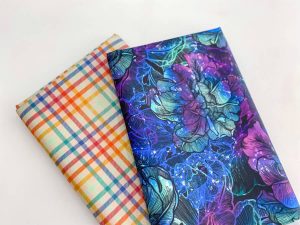
This fabric is new to me. I recently purchased it for the first time from Flamingo Fabrics here in the UK. I can’t give a review as I haven’t used it in a bag yet, but it looks like it will work well and I’ve heard positive feedback from others. It’s a lot thinner than the waterproof I usually use so I tried ironing interfacing onto the back of it and it worked great. Thankfully the fabric, although waterproof, didn’t melt. With the interfacing attached it’s much thicker and I’m really excited to try it on a project soon.
————————————————————————————-
Waterproof Canvas (WPC)
Adam and I both love waterproof canvas. We get ours from AE Market Store on Etsy, but it’s widely available in most countries. We use the 600 Denier/20oz version. There’s also a lot of water resistant canvas (WRC) available in the USA, but we haven’t come across it here in the UK yet so we’ll just discuss WPC for the purpose of this post. What are the pros?
- It’s very affordable and usually very wide (60″/1.5m)
- It doesn’t need interfacing
- It adds structure to the bag
- It’s waterproof and durable
- We find it works well on both our domestic and industrial machine
- It makes great binding!
What are the cons?
- It’s difficult to find patterned WPC
- Some people don’t like the texture/grid effect
- It’s thick and stiff and this can be a problem if you struggle with arthritis or pain in your hands
Below is an example of an Ojyma crossbody bag I made using WPC for the lining and binding.
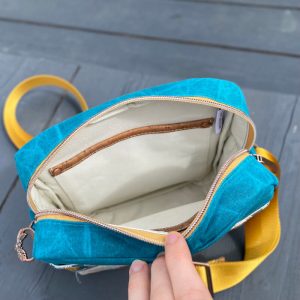
————————————————————————————-
Cork
I love cork! Adam isn’t such a fan because he thinks it looks strange, but I suppose that’s just different tastes. What are the pros?
- It’s lovely to sew on both our domestic and industrial machines
- I think it looks fabulous
- It’s biodegradable and environmentally friendly – they harvest it from tree bark without tearing the tree down. The tree regrows the cork after it’s removed
- There’s lots of colours and patterns available
What are the cons?
- It’s VERY expensive (£40+ per metre)
- The quality can differ considerably from one supplier to the next. You need to make sure you’re using a good quality supplier
- It’s not great for sharp corners such as box corners because over time it can lose it’s colour on high wear points
We source our cork from MB Cork in Portugal, but we’ve also been told that Sallie Tomato in the USA and MM Cork & Emmaline Bags in Canada all stock good quality cork. Below is an example of a Momexa I made using cork from MB Cork.
————————————————————————————-
Vinyl/Faux Leather
You may know that my favourite faux leather is the Mora leather available from Sew Hot in the UK or Emmaline Bags in Canada. However, there are many other types and brands of vinyl and faux leather. What are the pros?
- It’s durable and usually waterproof
- It looks great and comes in a wide variety of colours, designs and styles
- It’s widely available from most sewing companies
- It gives your bag a really professional finish
What are the cons?
- It’s not usually environmentally friendly as most vinyl and faux leather is plastic based
- It’s difficult to sew successfully on a domestic machine (even with a Teflon foot or walking foot, my machine doesn’t love it)
- It can be quite expensive depending on the style you opt for
Below is an example of a backpack I made using vinyl that was gifted to me from SunKiss Melbourne
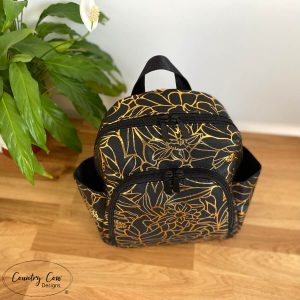
————————————————————————————-
Genuine Leather
If you’re new around here, I’ll let you know now that Adam and I love using leather in our bag making. But leather is a complicated and controversial subject. On one hand, you’re told that it’s created naturally which is good for the environment, it lasts longer than synthetic products and the majority of leather is from animals that have died for other reasons so using it is a better alternative than sending the leather to landfill. On the other hand, you’re told a lot of animals are killed specifically for the leather industry and the tanning process can be bad for the environment, depending on the method used. For that reason, it’s important to research the tannery whose leather you’re looking at buying. What are the pros of using leather in your bag making?
- It lasts and lasts and lasts. It won’t wear out like synthetic products which makes it great for handles and strap connectors
- A wide variety of thicknesses depending on the project you’re working on
- A wide variety of colours, styles and designs
- A truly luxurious look that’s different to synthetic products
What are the cons?
- It’s an animal based product
- Most domestic machines won’t touch it (my Bernina certainly won’t)
- It’s difficult to get hold of and usually has to be bought as a whole hide
- It’s expensive
We source our leather from A&A Crack & Sons, a leather wholesaler here in the UK who stock a variety of leather from different tanneries across the world. Below is an example of three leather bags Adam made using our upcoming No Sew Crossbody pattern.

I hope you’ve enjoyed this week’s blog. Please leave a comment below and let us know what your favourite fabric is for bag making!
Sign up to our mailing list to get weekly bag making tips by email
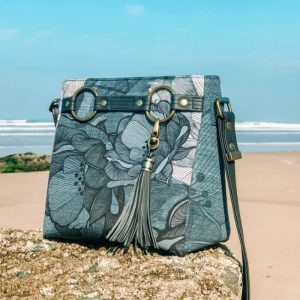

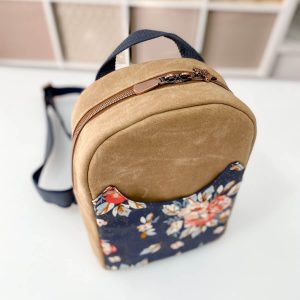

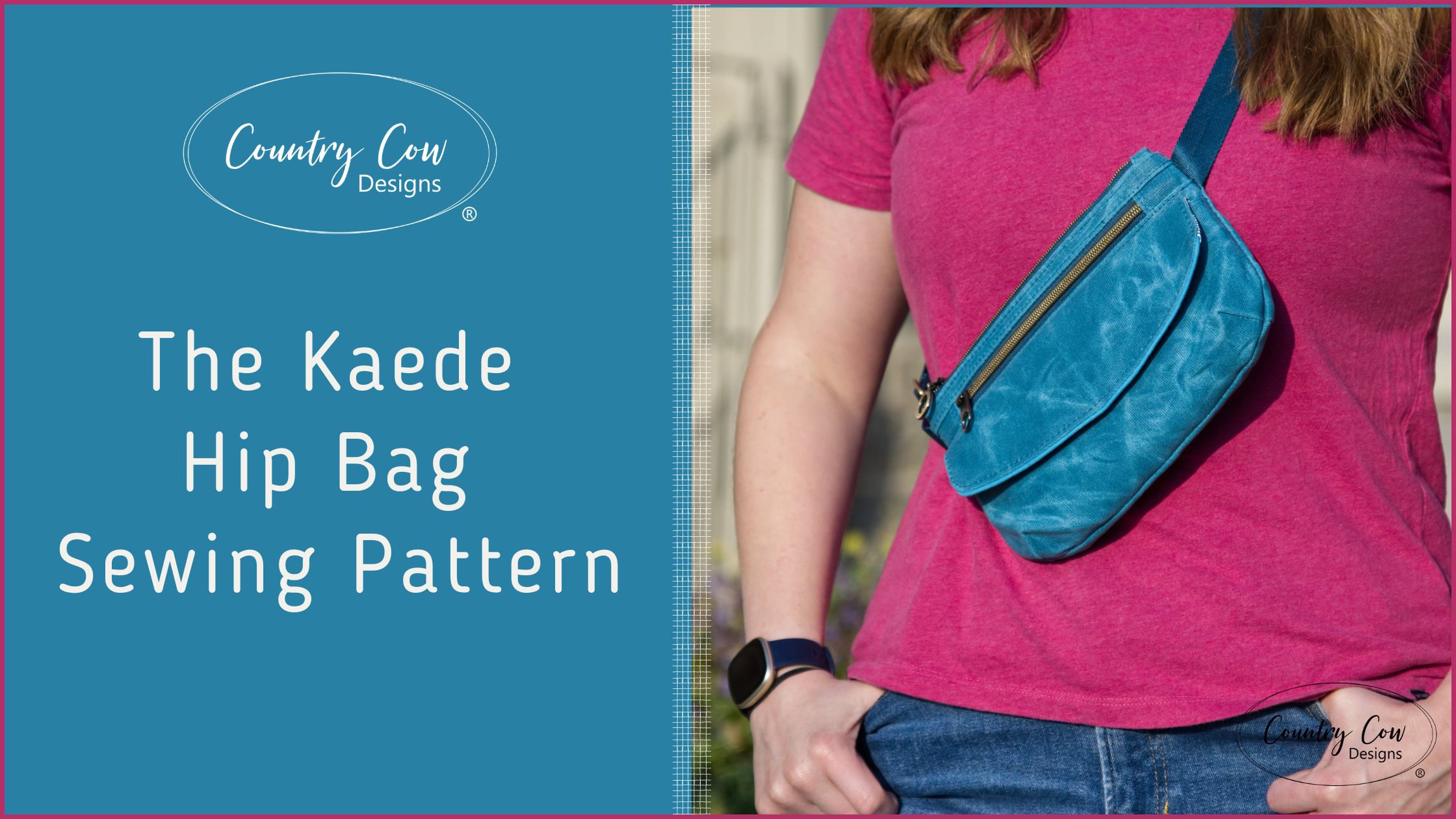

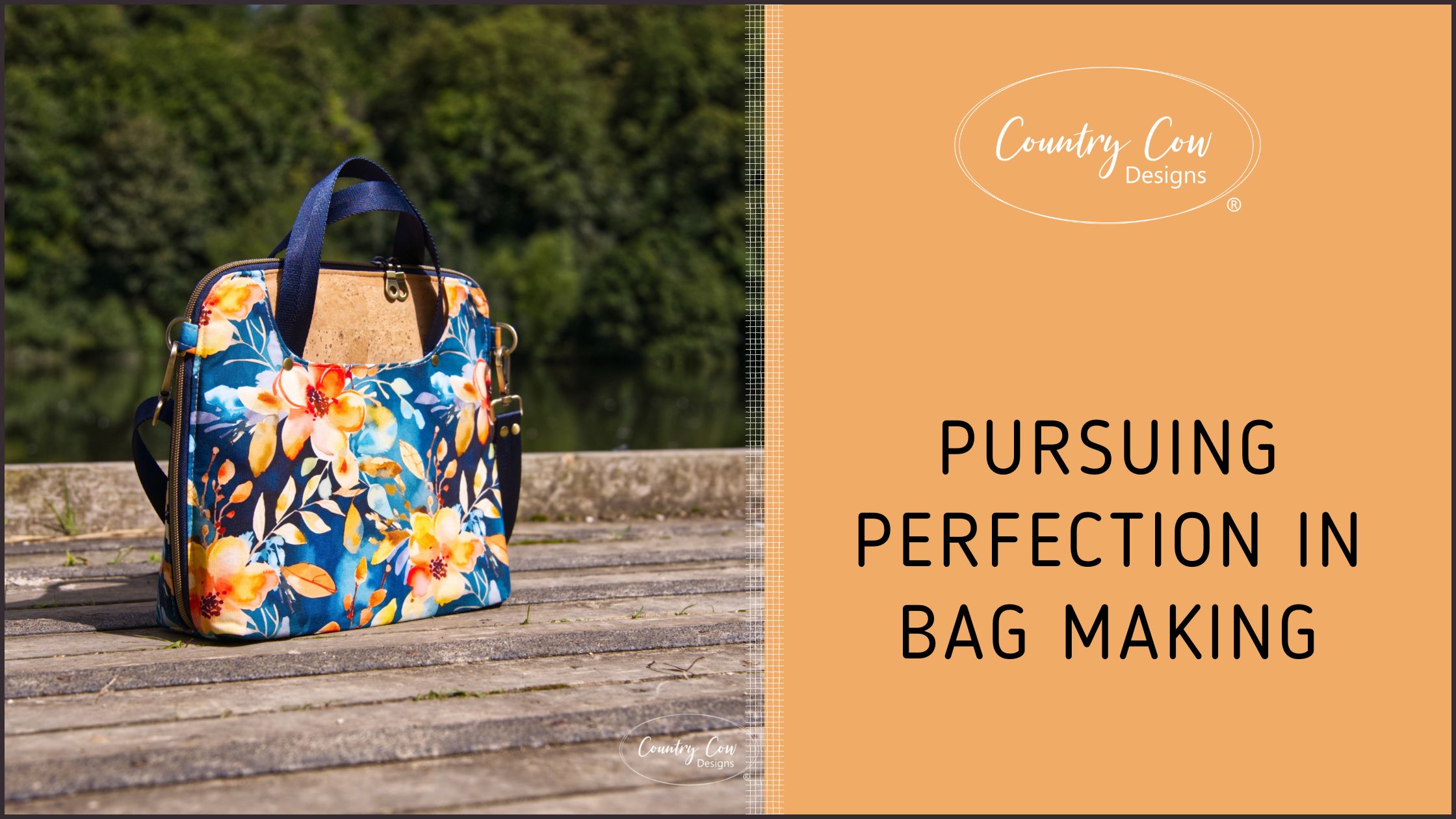
Thank you for the article on bagmaking fabrics. It was concise, interesting and informative.
Very Nice Article.
Fantastic information, very interesting – have been looking at the waterproof fabric and look forward to seeing what you make with it! Thanks so much for sharing your knowledge and expertise.
Thanks for the interesting blog on your favourite fabrics. I must admit that cotton has much more choice when it comes to colour and designs but as you say not as durable. Recently I’ve watched some bagmakers using a product called Odicoat on their cotton pieces which gives it a vinyl feel and makes it water repellent and able to wipe clean. I’d be interested to know if you’ve tried it and if so your opinion on it. Thanks.
I love the idea of Oddicoat but I’ll admit I haven’t tried it yet. One thing I have heard about it, is that it can shrink your fabric a bit so you have to do it before you cut your fabrics out. I’ll add it to my to-try list and see how it goes 😁
Great blog topic – I have been experimenting with various fabrics for bag making as well. I am on the Canadian west coast so use lots of waxed canvas. I also like to combine cork with faux leather’s for the exterior, both to manage costs but also to reduce cork related wear & tear on boxed corners.
Thank you so much for the information. I didn’t realize the wax would rub off when using waxed canvas for straps. By the way, love your tutorials and patterns.
Hi Jo & Adam
Thank you for your blog. Very interesting 👍🏼
Thanks for this article. I’ve been wondering about polyester fabrics for linings? Pros and cons? Would love some thoughts and advice!
Hi Jolene, I have very little experience with polyester fabrics. The waterproof fabric I mentioned from Flamingo Fabrics is polyester but I’m yet to use it in a bag and see how it goes. It looks like it will work well!
Good luck!